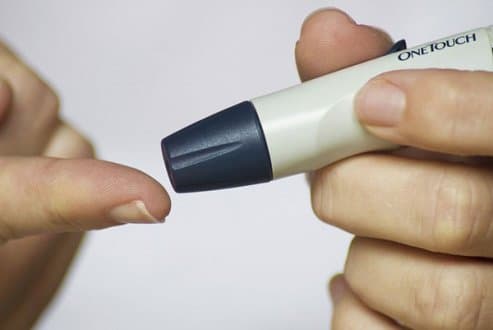Choosing between glipizide vs januvia requires a clear view of mechanisms, benefits, and risks. Both lower blood glucose in type 2 diabetes, yet they act differently. This update organizes key facts to help informed discussions with your clinician. It also flags practical points like dosing, interactions, and monitoring.
Key Takeaways
- Drug classes differ: glipizide stimulates insulin release; Januvia preserves incretin hormones.
- Hypoglycemia risk is higher with sulfonylureas; DPP-4 inhibitors are weight neutral.
- Dosing depends on meals, renal function, and concurrent medications.
- Pancreatitis signals, severe joint pain, and rash warrant urgent evaluation.
Glipizide vs Januvia
Glipizide is a sulfonylurea (insulin secretagogue) that prompts pancreatic insulin release. It works quickly and can reduce fasting and post-meal glucose. This class often suits cost-sensitive situations or patients needing greater immediate A1C reduction. However, the mechanism raises hypoglycemia risk, especially with missed meals or alcohol.
Januvia (sitagliptin) is a DPP-4 inhibitor that slows incretin breakdown. It enhances glucose-dependent insulin secretion and lowers glucagon. The effect is moderate, with low hypoglycemia risk when used alone. Weight tends to remain neutral, which matters for patients managing weight-related comorbidities.
These differences shape clinical use. Sulfonylureas may help when rapid effect is needed. DPP-4 inhibitors favor stability with fewer lows and less weight impact. For class background and mechanisms, see DPP-4 Inhibitors for context on incretin-based therapy.
How They Work and Efficacy
Glipizide increases insulin release regardless of glucose level, which explains hypoglycemia risk. This glipizide medicine may lower A1C by roughly 1–1.5 percentage points in many studies. It often pairs with metformin when additional control is needed. Patients should understand meal timing because dose-effect is linked to carbohydrate intake.
Januvia enhances incretin activity to modulate insulin and glucagon. Its A1C reduction is usually modest, about 0.5–1 percentage point. Benefits include simplicity, once-daily dosing, and weight neutrality. For broader oral options and stepwise approaches, see Oral Diabetes Medications to compare classes and combinations.
Note: Do not start, stop, or switch medications without professional guidance. Individual risks and goals vary by history, labs, and comorbidities.
Dosing and Adjustments
Starting and titrating a glipizide dose typically considers fasting glucose and meal patterns. Immediate-release tablets are usually taken 30 minutes before breakfast. Extended-release forms are taken with the first main meal. Missed meals, irregular schedules, and alcohol use can unpredictably lower glucose.
Januvia is taken once daily, with or without food. Renal function guides the dose; lower eGFR requires reductions. Some patients remain on a stable dose for years, while others need intensification. For personalized titration details, see Januvia Dosage Tips for practical dose-adjustment considerations.
Safety Profile: Glipizide
Common glipizide side effects include hypoglycemia (low blood sugar), dizziness, and weight gain. Skin reactions, photosensitivity, and low sodium may occur. Risk increases with skipped meals, alcohol, renal insufficiency, or interacting drugs. Counseling about recognizing and treating lows is essential.
Serious reactions are uncommon but require prompt care. Symptoms can include confusion, seizures from severe hypoglycemia, or allergic reactions. Regulatory labeling describes these risks; see the FDA glipizide drug label for detailed safety information. For comparisons within this class, the overview Glyburide vs Glipizide helps clarify potency and risk trade-offs.
Safety Profile: Januvia
Typical januvia side effects include nasopharyngitis, headache, and mild gastrointestinal discomfort. Severe joint pain has been reported and may be abrupt; patients should stop the medication and seek evaluation if this occurs. Pancreatitis signals, including severe abdominal pain radiating to the back, require urgent assessment.
Rare skin reactions such as bullous pemphigoid have been reported. Dose adjustment is important in chronic kidney disease. Safety details are outlined in the FDA sitagliptin prescribing information. For additional risk-mitigation strategies, see the Januvia Side Effects Guide for monitoring suggestions.
Combining and Interactions
Many patients use metformin with either medication. When combined, side effects of januvia with metformin may include gastrointestinal upset, though hypoglycemia remains unlikely. By contrast, combining a sulfonylurea with other agents can raise the chance of lows. Alcohol potentiates hypoglycemia with sulfonylureas and should be used cautiously.
Fixed-dose combinations can simplify regimens. Sitagliptin plus metformin is available as Janumet. For practical use, see Janumet XR Uses to understand formulation and dosing, and consider the product Janumet XR when discussing once-daily options with your provider.
Long-Term and Cardiometabolic Considerations
Evidence on long-term side effects of glipizide focuses on weight gain and hypoglycemia burden. Recurrent lows can limit up-titration and affect quality of life. Some clinicians prefer agents with proven cardiorenal benefits when atherosclerotic disease, heart failure, or kidney disease is present. Individual risk profiles should drive sequencing and combinations.
Current guidance prioritizes safety and comorbidity alignment. For therapy selection across cardiovascular and renal contexts, consult the ADA Standards of Care for updated algorithms. For incretin alternatives, you may review Jardiance vs Januvia to compare outcomes beyond glucose lowering.
Formulations and Renal Use
Januvia comes in multiple strengths, including januvia 100 mg for patients with normal renal function. Dose reductions are recommended for moderate to severe impairment. Providers typically calculate eGFR to select an appropriate strength. Consistency at the same time daily can aid adherence.
Several DPP-4 options exist, each with specific renal or hepatic considerations. Alogliptin is one alternative in this class. If you are comparing products, see Nesina 28 Tablets to understand available tablet strengths, and review Januvia 25–100 mg when discussing dose selection with your clinician.
Diet and Daily Use
Nutrition and timing influence sulfonylurea effects. Patients should understand foods to avoid while taking glipizide, particularly alcohol and skipped-carbohydrate meals, which can trigger lows. Carry fast-acting glucose for symptoms like shakiness, sweating, or confusion. A consistent breakfast pattern helps stabilize morning dosing.
For sitagliptin, meal timing is less critical, though prudent diet still matters. Balanced carbohydrate intake, fiber, and hydration support daily control. A home glucose log can clarify dose-response patterns. For broader condition education, explore Diabetes Articles for nutrition and self-management topics.
When to Consider Each
Therapy selection weighs efficacy, hypoglycemia risk, cost, comorbidities, and preference. Summarizing glipizide pros and cons helps: strong A1C reduction and low cost, offset by lows and weight gain. Sitagliptin offers simplicity and weight neutrality, though its A1C effect is modest. Both may serve as add-ons to metformin in different contexts.
Patients with established cardiovascular or renal disease may benefit from other classes with outcome data. For SGLT2 considerations, see Farxiga Dapagliflozin for heart and kidney discussions with your team. For incretin-based injectables, review Trulicity Pens or Mounjaro KwikPen to understand weekly dosing and weight effects.
Related Comparisons and Alternatives
Therapeutic nuance grows when comparing within classes. If you are evaluating sulfonylureas, see Glimepiride vs Glipizide for differences in potency and hypoglycemia profiles. Among DPP-4 agents, Linagliptin vs Januvia explains renal dosing contrasts and drug selection.
Additional DPP-4 comparisons can refine choices. For formulation and class nuances, explore Sitagliptin vs Saxagliptin to understand interchangeability and contraindications. These resources provide context before discussing changes during clinic visits.
Tip: Bring recent glucose logs and medication bottles to appointments. Concrete data helps clinicians fine-tune regimens and minimize adverse effects.
Recap
Both drugs control hyperglycemia but through different pathways. Sulfonylureas stimulate insulin release and can lower A1C more strongly, with a trade-off of hypoglycemia and weight gain. DPP-4 inhibitors provide modest A1C reductions with fewer lows and weight neutrality. Understanding these patterns supports personalized, safer therapy.
Discuss options that match your clinical picture, priorities, and budget. Consider renal function, hypoglycemia history, weight goals, and concomitant conditions. Use authoritative resources and regular follow-up to reassess fit over time. With clear goals and monitoring, most regimens can be optimized.
This content is for informational purposes only and is not a substitute for professional medical advice.


